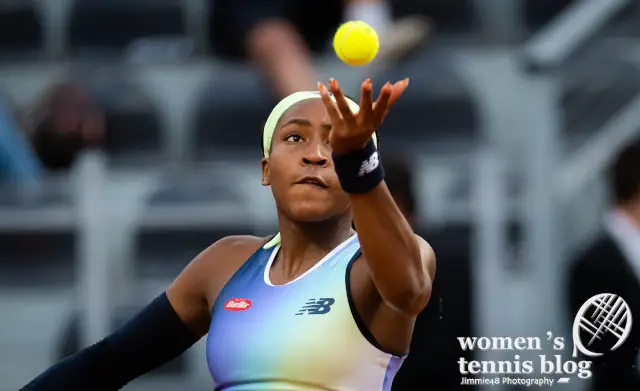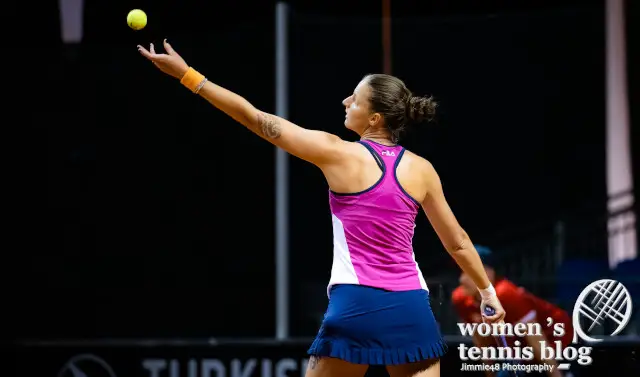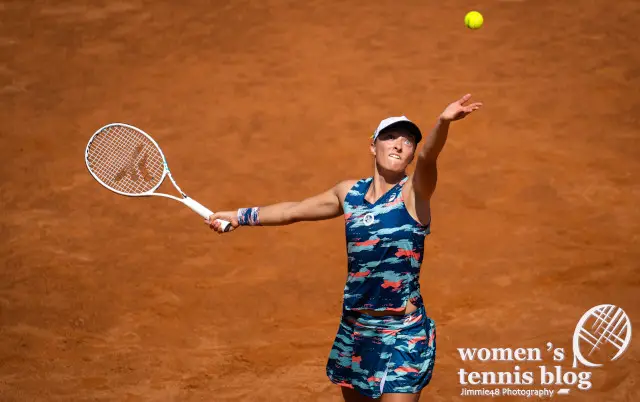Every point in tennis starts with serve, so players have an opportunity to develop a weapon that they will use many times over the course of a match. Ball toss is an integral part of every serve. Coach Marcin Bieniek, founder of Enjoy Tennis Blog, explains two schools of teaching the tennis serve and advises which toss you should use depending on your skill level.

Reasons serve is the most important stroke in tennis
If we take a look at the men’s game, it is clear that without a good serve it is impossible to win against good rivals. If we look at the women’s game, modern champions also have great deliveries that put opponents into difficult positions.
Players can improve their serve without supervision. They can work on serve before or after the scheduled practice with their coach. Many champions took baskets of balls on the court and served a few baskets in a row to make sure they could control different spins and directions while performing under pressure.
Tennis serve can be compared to the free kick or penalty kick in soccer. Opponents don’t have a chance to disturb the action — the only thing they can do is react to the performed action.
Understanding this puts high priority on developing a solid serve, because it allows players to dominate in at least 50% of games in tennis matches. While preparing a good start of the point, players can stop the action every time they feel that something is wrong and won’t lose a point for that interruption.

Every player has their individual serve style. We can see players who take regular backswings, as well as the ones who perform it in the abbreviated form. Some players use platform stance, while others feel more dynamic with pin-point formation. The differences are also visible in the toss. Some players toss it lower, while others need more time to perform the whole action.
Pros and cons of different serve toss methods
There are two schools of teaching the serve. One teaches that player should always toss the ball in the same place, so the opponent can’t guess the type of serve that the server will use. The other school teaches that small adjustments have to be made while choosing different types of serves to allow for better quality. I am a fan of the second approach and I would like to explain it to help you choose the toss that will give you the biggest benefits.
There is no doubt that having one toss, being able to hit high-quality serves in different directions and using various spins could be a great weapon. However, every type of serve has specific characteristics and it is impossible to toss the ball in one spot and hit both excellent slice and kick serve. Slice serve requires different racquet angle and racquet trajectory than kick serve, so to achieve the best quality, adjustment to the toss is necessary.
Changing the toss will give information to the opponent about the spin that the server wants to use, but the opponent will still not know anything about the direction of the serve. If the server has a great kick and slice serve, it is more effective to give cues about the spin but to disguise the direction. On the other hand, if the server always uses the same toss, the player can’t generate heavy spin and the quality of specific type of serve will always be inferior to the serve when the ball is placed exactly to the right or left side.

The answer comes down to the quality of delivery — if a player has excellent serve, they don’t have to disguise the spin, because the quality will always give them advantage over the opponent’s return. On the other side, if a player has only a decent serve, it is a smart move to put pressure on the rival by disguising your intentions and always serving from the same toss.
Conclusion
Tennis is an individual game so approach to the serve, including the toss, has to be individual too. Most importantly, players have to understand the quality of their serve. If it is a weapon, all opponents will know it, so there is no reason to hide your intentions. On the other hand, if the serve doesn’t put the returner into trouble, it is better to not give any cues about the spin, so opponents will have to guess the type of serve every time they prepare for returns.
To learn more from coach Marcin Bieniek, join his on-demand video training program and get a 30% discount with the code WTBPROMO.
MORE TENNIS SERVE ARTICLES FROM OUR TENNIS TIPS PAGE:
- How to practice serve the right way
- How to make your serve more effective
- Doubles serving strategy: How to hold serve as a team
- How to make your second serve consistent




